How to Read a Long Chapter Book in Two or Three Hours
It's fun to read for pleasure but sometimes you don't have the ability to choose how much time you get to read a book. If you need to read a book and only have 2 or 3 hours to do so, you can still get through it with some good preparation...
Part 1 of 3:
Previewing the Text
-
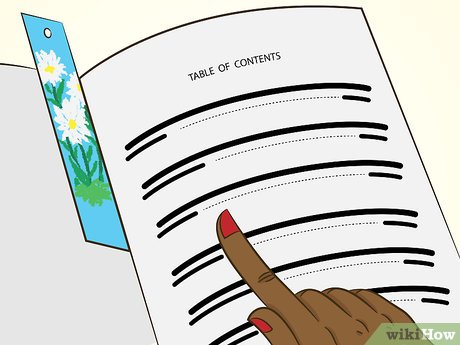 How to Read a Long Chapter Book in Two or Three Hours Picture 1 Look at the text ahead of time. First, look at the table of contents. Take note of how many chapters or sections there are and how many pages are in each. Flip through the book and take notes of charts, pictures, or subsections. Take a stab at what the book will cover ahead of time, this will assist with 'active reading' later.[1]
How to Read a Long Chapter Book in Two or Three Hours Picture 1 Look at the text ahead of time. First, look at the table of contents. Take note of how many chapters or sections there are and how many pages are in each. Flip through the book and take notes of charts, pictures, or subsections. Take a stab at what the book will cover ahead of time, this will assist with 'active reading' later.[1] -
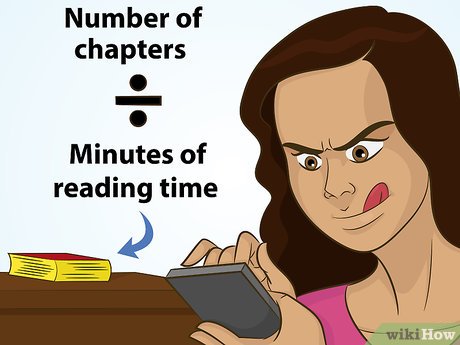 How to Read a Long Chapter Book in Two or Three Hours Picture 2 Calculate how long you should spend on each section. For example, If there are fifteen chapters and you have three hours, you should divide 180 (60 minutes x 3) by fifteen. In this example, each chapter will take, on average, 12 minutes. Whatever the amount of time you calculate, this is not a hard and fast time, it is just a tool to help you keep track of your time and progress. You need to factor in times for breaks and also understand that some chapters will take longer amount of time and some will take a shorter amount of time to complete.
How to Read a Long Chapter Book in Two or Three Hours Picture 2 Calculate how long you should spend on each section. For example, If there are fifteen chapters and you have three hours, you should divide 180 (60 minutes x 3) by fifteen. In this example, each chapter will take, on average, 12 minutes. Whatever the amount of time you calculate, this is not a hard and fast time, it is just a tool to help you keep track of your time and progress. You need to factor in times for breaks and also understand that some chapters will take longer amount of time and some will take a shorter amount of time to complete. -
 How to Read a Long Chapter Book in Two or Three Hours Picture 3 Review what your goals are. Knowing your goals will help you pay attention to the right things and not waste time on irrelevant aspects of the book.[2][3] Are you going to be quizzed on the material? Are you trying to learn a specific skill from the pages? Are you supposed to be paying attention to certain aspects of the book (a character, the way the author uses language, etc.)? Knowing exactly what you need to get out of the reading will help you focus on what's important and not waste time reading and retaining something immaterial to your goal.
How to Read a Long Chapter Book in Two or Three Hours Picture 3 Review what your goals are. Knowing your goals will help you pay attention to the right things and not waste time on irrelevant aspects of the book.[2][3] Are you going to be quizzed on the material? Are you trying to learn a specific skill from the pages? Are you supposed to be paying attention to certain aspects of the book (a character, the way the author uses language, etc.)? Knowing exactly what you need to get out of the reading will help you focus on what's important and not waste time reading and retaining something immaterial to your goal.
Part 2 of 3:
Reading Faster
-
 How to Read a Long Chapter Book in Two or Three Hours Picture 4 Use a guide or pointer. Whether you use your finger, a piece of a paper, a bookmark, or a pen, a pointer will help guide how much you read.[4] Hold it up to the word or line of text and move it as you complete reading.[5][6] Sometimes you will want to read faster, sometimes you will want to read slower. The more you use it, the more it will guide how quickly you can read.
How to Read a Long Chapter Book in Two or Three Hours Picture 4 Use a guide or pointer. Whether you use your finger, a piece of a paper, a bookmark, or a pen, a pointer will help guide how much you read.[4] Hold it up to the word or line of text and move it as you complete reading.[5][6] Sometimes you will want to read faster, sometimes you will want to read slower. The more you use it, the more it will guide how quickly you can read. -
 How to Read a Long Chapter Book in Two or Three Hours Picture 5 Be an active reader. Don't wait for the story to come to you. Anticipate what is going to happen and what you need to retain, and look for those, whether they are facts, plot points, or important themes.[7][8]
How to Read a Long Chapter Book in Two or Three Hours Picture 5 Be an active reader. Don't wait for the story to come to you. Anticipate what is going to happen and what you need to retain, and look for those, whether they are facts, plot points, or important themes.[7][8] -
 How to Read a Long Chapter Book in Two or Three Hours Picture 6 Scan for important words. Instead of reading every sentence, let your eyes grab onto the major words. After time you will find that you can take in the bigger meaning of the paragraph with just these few words. You can always quickly rescan if you want to retain more information.[9]
How to Read a Long Chapter Book in Two or Three Hours Picture 6 Scan for important words. Instead of reading every sentence, let your eyes grab onto the major words. After time you will find that you can take in the bigger meaning of the paragraph with just these few words. You can always quickly rescan if you want to retain more information.[9] -
 How to Read a Long Chapter Book in Two or Three Hours Picture 7 Relax your face, don't let your eye take in every word. Instead of your eye tracking every single word, take advantage of your peripheral vision to see what is coming ahead of time. Begin to see text as a group of words that you can take in all at once.[10]
How to Read a Long Chapter Book in Two or Three Hours Picture 7 Relax your face, don't let your eye take in every word. Instead of your eye tracking every single word, take advantage of your peripheral vision to see what is coming ahead of time. Begin to see text as a group of words that you can take in all at once.[10] -
 How to Read a Long Chapter Book in Two or Three Hours Picture 8 Stop subvocalization. Subvocalization is when you see a word and then think the entire word in your head. If you stop doing this, you will save a lot of time while reading. In order to turn off this part of your mind, you can occupy it with something else, like you can chew gum, counting from one to ten over and over again, or keep repeating a-e-i-o-u in your head.[11][12]
How to Read a Long Chapter Book in Two or Three Hours Picture 8 Stop subvocalization. Subvocalization is when you see a word and then think the entire word in your head. If you stop doing this, you will save a lot of time while reading. In order to turn off this part of your mind, you can occupy it with something else, like you can chew gum, counting from one to ten over and over again, or keep repeating a-e-i-o-u in your head.[11][12] -
 How to Read a Long Chapter Book in Two or Three Hours Picture 9 Learn speed-reading. Speed reading is a specific skill that takes practice and dedication. There are many apps and books you can get to help you do this, but it might not be worth it if you need to read a chapter book in 2-3 hours today. Keep in mind that sometimes speed-reading can affect your comprehension, so there is a trade off.[13]
How to Read a Long Chapter Book in Two or Three Hours Picture 9 Learn speed-reading. Speed reading is a specific skill that takes practice and dedication. There are many apps and books you can get to help you do this, but it might not be worth it if you need to read a chapter book in 2-3 hours today. Keep in mind that sometimes speed-reading can affect your comprehension, so there is a trade off.[13] -
 How to Read a Long Chapter Book in Two or Three Hours Picture 10 Know when to stop skimming and start reading. Occasionally you will come across an important part of the book. At these places it is important to stop skimming and read more deeply so you will retain more. Reading an important part closely is as important as reading a lot of parts not closely. If you can tell it is an important part of the book, you may want to mark it with a pen, highlighter, pencil, bookmark, or turning the page down.[14]
How to Read a Long Chapter Book in Two or Three Hours Picture 10 Know when to stop skimming and start reading. Occasionally you will come across an important part of the book. At these places it is important to stop skimming and read more deeply so you will retain more. Reading an important part closely is as important as reading a lot of parts not closely. If you can tell it is an important part of the book, you may want to mark it with a pen, highlighter, pencil, bookmark, or turning the page down.[14]
Part 3 of 3:
Reading in a Productive Environment
-
 How to Read a Long Chapter Book in Two or Three Hours Picture 11 Schedule your reading session. Instead of squeezing your reading time into an already full day, set aside in 2-3 hours of reading like it was an activity or event you need to show up at.[15] By dedicating specific time to reading, you will limit distractions and interferences.[16]
How to Read a Long Chapter Book in Two or Three Hours Picture 11 Schedule your reading session. Instead of squeezing your reading time into an already full day, set aside in 2-3 hours of reading like it was an activity or event you need to show up at.[15] By dedicating specific time to reading, you will limit distractions and interferences.[16] -
 How to Read a Long Chapter Book in Two or Three Hours Picture 12 Choose a quiet environment. You will want to read in a quiet place with no distractions, not a convivial area where you might begin a conversation or get distracted by conversations around you.[17] You might want to go to a library or stay in your house when it is empty. Avoid places that will trigger interruptions or disturbances—you may fall asleep in your bed, you may look for food in a kitchen.[18]
How to Read a Long Chapter Book in Two or Three Hours Picture 12 Choose a quiet environment. You will want to read in a quiet place with no distractions, not a convivial area where you might begin a conversation or get distracted by conversations around you.[17] You might want to go to a library or stay in your house when it is empty. Avoid places that will trigger interruptions or disturbances—you may fall asleep in your bed, you may look for food in a kitchen.[18] -
 How to Read a Long Chapter Book in Two or Three Hours Picture 13 Make yourself comfortable. Because you will be in one place for several hours, you will want to make sure you are not in pain and will remain comfortable for a long amounts of time.
How to Read a Long Chapter Book in Two or Three Hours Picture 13 Make yourself comfortable. Because you will be in one place for several hours, you will want to make sure you are not in pain and will remain comfortable for a long amounts of time.- Pay attention to your posture.
- Make sure the lighting is good so you will not strain your eyes.
- Make sure you have lower back support, either from a chair, a pillow, or a rolled-up sweatshirt.[19]
-
 How to Read a Long Chapter Book in Two or Three Hours Picture 14 Avoid distractions. It will be very tempting to put down the book and do something else. You must resist these distractions and plan for them ahead of time. Turn off your phone. Stay away from a computer, handheld device, video games, or television.[20] Even food can be a distraction. Make sure you have eaten ahead of time or have a snack on hand so that you will not get up and go somewhere else.
How to Read a Long Chapter Book in Two or Three Hours Picture 14 Avoid distractions. It will be very tempting to put down the book and do something else. You must resist these distractions and plan for them ahead of time. Turn off your phone. Stay away from a computer, handheld device, video games, or television.[20] Even food can be a distraction. Make sure you have eaten ahead of time or have a snack on hand so that you will not get up and go somewhere else. -
 How to Read a Long Chapter Book in Two or Three Hours Picture 15 Be awake and alert. If you are reading in a short amount of time, you will need to stay focused. You should read the book during the time of day you feel most alert.[21] For example, do not begin reading right before you typically go to sleep, or you risk falling asleep. You can also try drinking caffeine or drinking cold water.
How to Read a Long Chapter Book in Two or Three Hours Picture 15 Be awake and alert. If you are reading in a short amount of time, you will need to stay focused. You should read the book during the time of day you feel most alert.[21] For example, do not begin reading right before you typically go to sleep, or you risk falling asleep. You can also try drinking caffeine or drinking cold water.
5 ★ | 2 Vote
You should read it
- As a busy person, apply 11 ways below to have time to read
- How to Read a Newspaper
- How to Research a Topic
- How to Become a Book Lover
- Microsoft Teams' new Reading Progress tool improves student reading and saves teachers time
- How to Read for Graduate School
- How to Buy a Bicycle
- How to Spend Your Free Time (Girls)
- Learn about IELTS Reading skills and how to do effective reading
- How to Cite a Blog in APA
- 10 great benefits of reading every day
- To 'read long-term quickly' please follow this method immediately
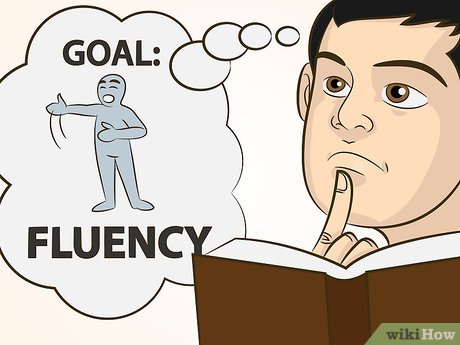
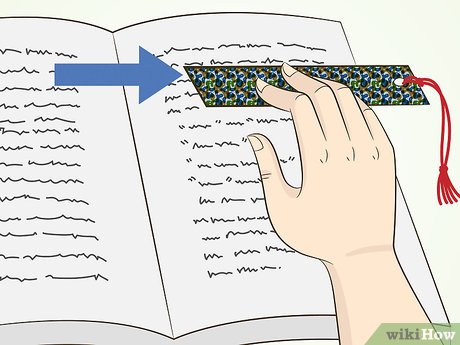
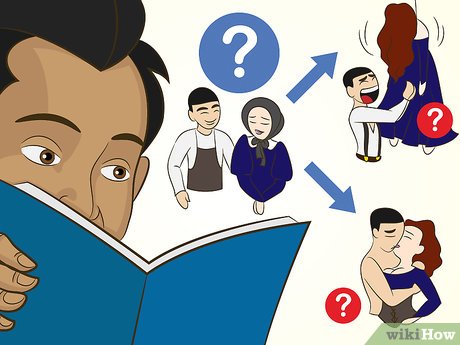
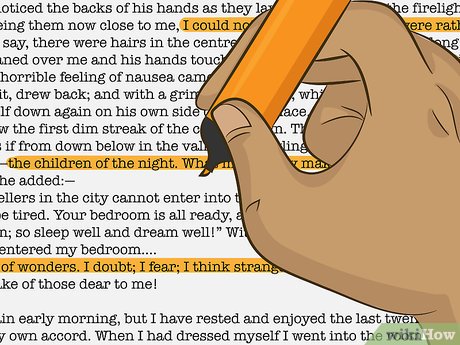
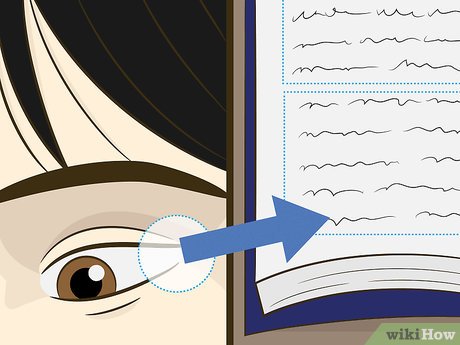
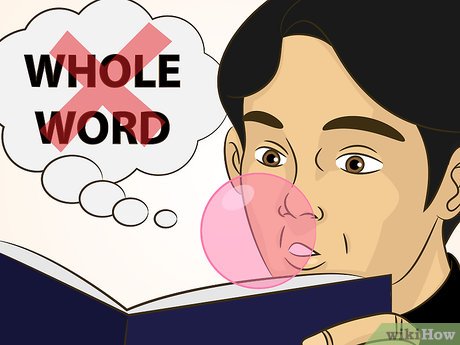
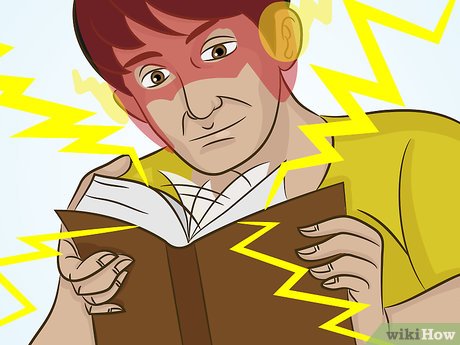
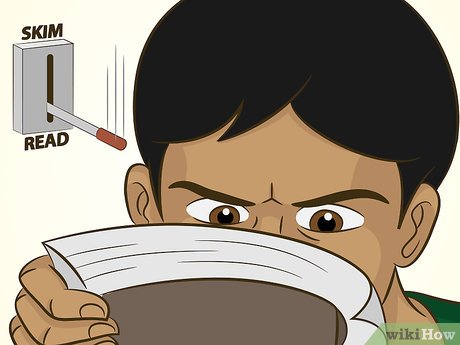
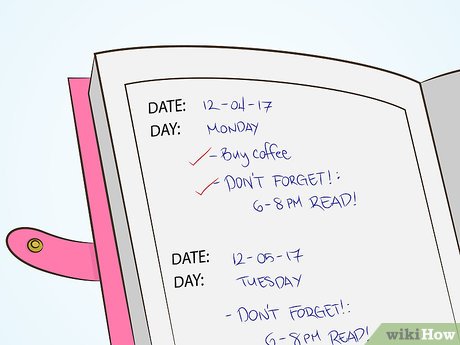
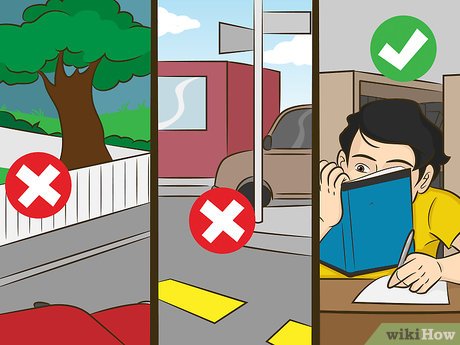
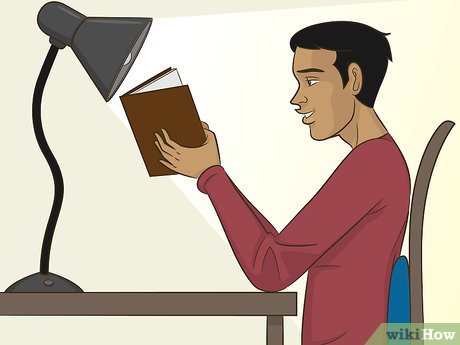
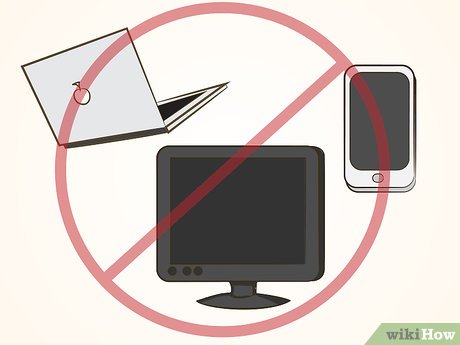







 How to Cite a Book Chapter in APA
How to Cite a Book Chapter in APA 10 indispensable apps for book lovers
10 indispensable apps for book lovers How to book motorbike Now.vn with only 5,000 VND
How to book motorbike Now.vn with only 5,000 VND How to Be Well Read
How to Be Well Read How to find a book when you don't remember the name and author
How to find a book when you don't remember the name and author Secure ASP.NET
Secure ASP.NET